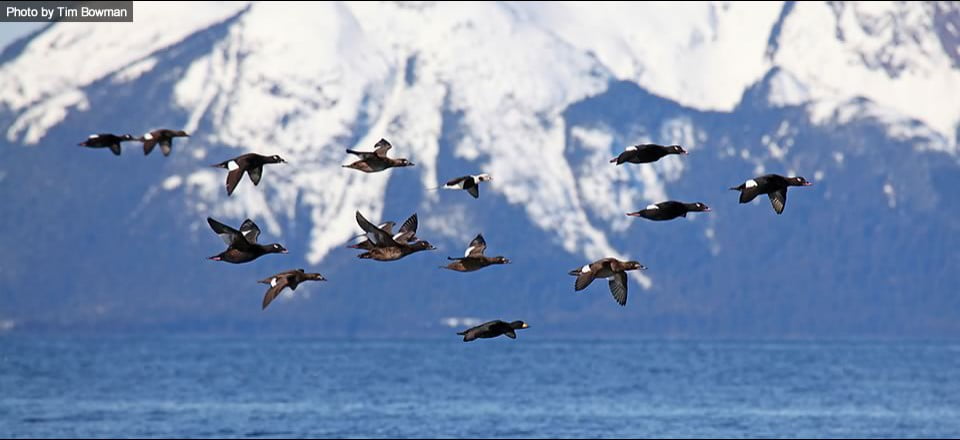Population monitoring and information needs for management and conservation of sea ducks on the Great Lakes

Project Number: 153
Year Funded: 2017
Lead Institution(s): University of Wisconsin- Stevens Point
Project Lead: Jacob Straub
Collaborator(s): Michael Schummer (SUNY Oswego)
Location: Great Lakes
Focal Species: All Sea Ducks, Bufflehead (Bucephala albeola), Barrow’s Goldeneye (Bucephala islandica), Common Goldeneye (Bucephala clangula), Harlequin Duck (Histrionicus histrionicus), Long-tailed Duck (Clangula hyemalis), Common Eider (Somateria mollissima), King Eider (Somateria spectabilis), Spectacled Eider (Somateria fischeri), Steller’s Eider (Polysticta stelleri), Common Merganser (Mergus merganser), Hooded Merganser (Lophodytes cucullatus), Red-breasted Merganser (Mergus serrator), Black Scoter (Melanitta americana), Surf Scoter (Melanitta perspicillata), White-winged Scoter (Melanitta delgandi)
Project Description: Effective conservation of sea ducks occurring on the Great Lakes requires understanding the current state of knowledge for this diverse bird group and the primary stakeholders responsible for their management. As such, we identified key US and Canadian stakeholders interested in or responsible for sea duck monitoring and conservation in the Great Lakes region and organized a 2-day professional symposium on this topic. We also conducted an associated stakeholder survey to frame the symposium agenda and discussion. Our efforts brought together 28 individuals and our stakeholder survey had 31 respondents. Both the pre-meeting survey and symposium agenda focused around three central themes: sea duck distribution and abundance on the Great Lakes; threats and knowledge gaps; and population dynamics, harvest, and user groups. Our effort resulted in a compiled list of relevant conservation agencies and organizations and associated meta-data regarding current and historical monitoring of Great Lakes sea ducks. Through questionnaire analysis, symposium presentations, and associated meeting discussion, we learned professional stakeholders spend less time on sea duck related issues relative to other waterfowl taxa, but this varies by agency. We also determined many stakeholders believed there is a lack of ecological information for guiding sea duck habitat conservation on the Great Lakes and that population abundance data may be inadequate to effectively manage sea duck harvest. To address these concerns, we recommend increased collaboration when managing population abundance surveys and results, and where appropriate, developing a unified database of spatial and temporal Great Lakes sea duck population information. State and Provincial agencies, flyways, and bird conservation joint ventures can use the database to improve understanding of sea duck abundance, distribution, and habitat needs on the Great Lakes.
Project Reports:
